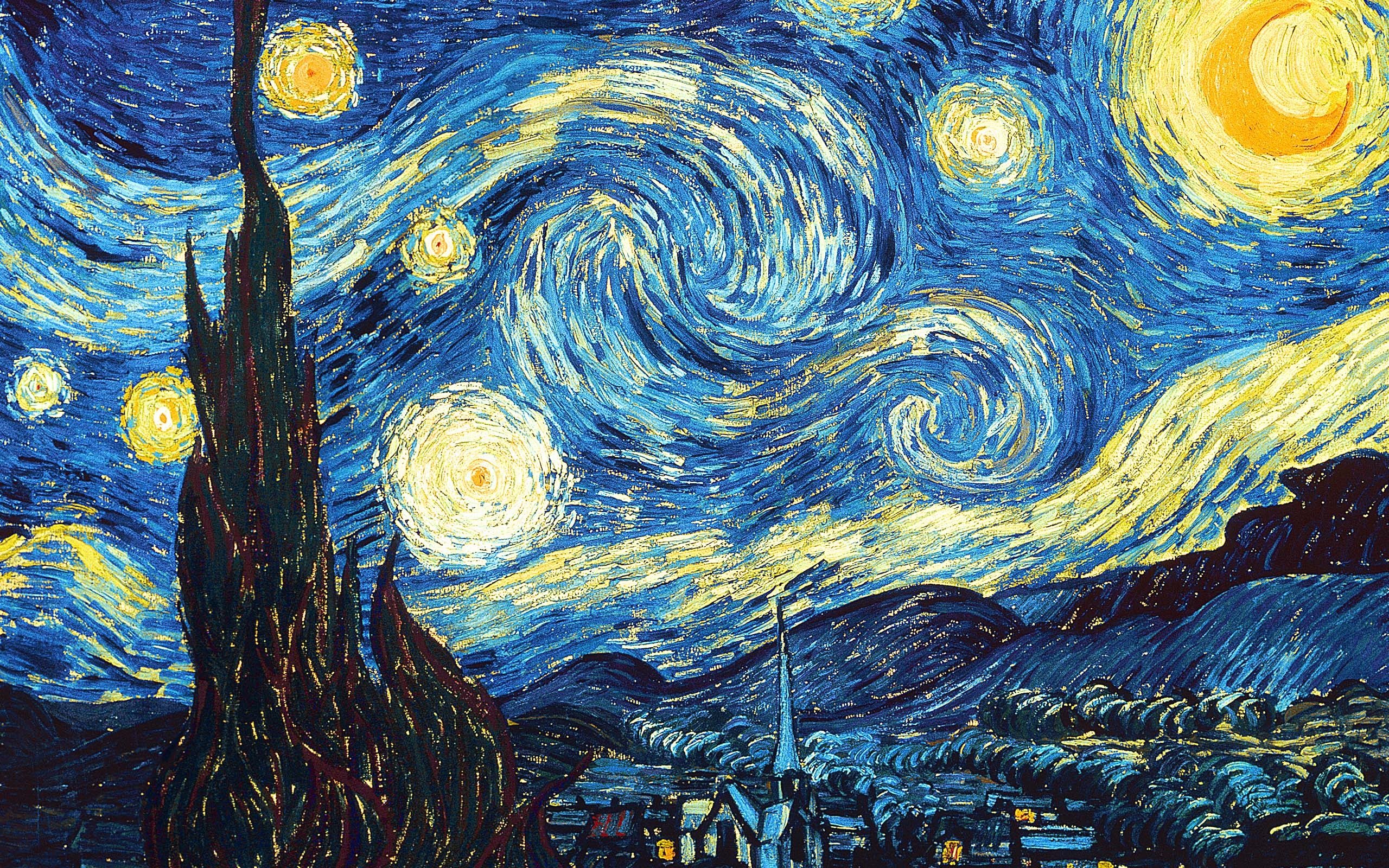The Starry Night is considered to be Vincent van Gogh’s masterpiece, painted while he was a patient in a mental asylum at Saint-Rémy-de-Provence. The swirling composition of the sky and the melancholic blue color palette, coupled with Van Gogh’s tragic history, have caused the artwork to become one of the most recognizable paintings of all time. There is so much to explore within The Starry Night, and in this article, Singulart focuses on the story behind the painting, the composition and interpretations, and how it has been represented in popular culture.
The story of The Starry Night Van Gogh could be considered the archetype of the tortured artist. Plagued by mental problems throughout his life, his condition rapidly deteriorated following a fight with his friend Paul Gauguin, during which he famously cut off part of his own ear. Although he went back and forth between his home (depicted in Yellow House) and the hospital, he fell victim to increased hallucinations, and delusions that he was being poisoned.
He voluntarily checked himself into a psychiatric asylum in Saint-Rémy, France. Because the asylum catered to the wealthy, and was only half occupied on Van Gogh’s arrival, he was able to maintain a relative amount of privacy and could even convert one of the rooms into a studio.
During his time there, Van Gogh produced over one hundred paintings, and although many were of the building and its surrounding grounds, he also produced some of the most highly praised pieces of his career. His famous blue self-portrait was painted during this time, as well as Irises, and of course his magnum opus, The Starry Night.
One of the first things the viewer notices about The Starry Night is the swirling, dreamlike sky. The viewer’s eye naturally follows these whirls, punctuated by clusters of yellow circles surrounded by a white glow. The rolling swirls in the sky give the piece a fluidity, and a sense of continuity. To achieve this effect, he used a loaded brush to create an impasto texture, which means the texture is applied heavily onto the canvas, leaving the brushstrokes and paint-knife marks visible (a feature evident in much of Van Gogh’s work).
The vivid colors in The Starry Night also suggest emotion rather than realism. Although it has been argued that Van Gogh could have been suffering from lead poisoning late in his life, causing him to choose rather odd colors in his pieces, it seems likely that he was representing the night sky in a way that was particular to him. In a letter to his sister Wilhemien, Van Gogh wrote:
What does it mean?
Of course, given the artwork’s tragic backstory, there are numerous interpretations about what could have been going through Van Gogh’s mind when he created The Starry Night. One of the most striking parts of The Starry Night is the curved, black cypress tree at the right of the piece. Cypress trees are commonly associated with cemeteries and death, and perhaps the prominence of the tree in the piece was intended to symbolize Van Gogh’s depressed mental state.
The cypress tree has an almost threatening presence over the still, calm town. Spanning almost the entire height of the canvas, it has been interpreted as a link between life (the town and the landscape) and death (the sky).
Van Gogh was intrigued by the topic of death, writing, “Just as we take the train to go to Tarascon or Rouen, we take death to go to a star.”
Although Van Gogh denied that The Starry Night had any religious meaning, critics have argued that it may show some subliminal religious message By Tara Lloyds.

